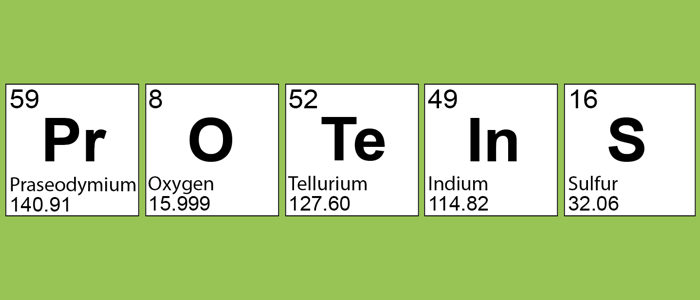Nicola Jones
‘Science, my lad, is made up of mistakes, but they are mistakes which it is useful to make, because they lead little by little to the truth.’ from Jules Verne’s Journey to the Center of the Earth

Nicola Jones
... is a trained chemist whose main research focus is on molecular and structural biology. She completed her basic studies of chemistry (Vordiplom) at the University of Bielefeld, Germany from where she moved to the Westfälische-Wilhelms-Universität in Münster, Germany to complete her undergraduate studies (Diplom). She continued her research in the Organic Chemistry Department in Münster from where she obtained her doctoral degree. Post-doctoral research was carried out in the Department of Molecular Biology and Biochemistry, Simon Fraser University, Burnaby, Canada. From there Nicola moved first to the Biochemistry Department of the University of Cambridge, UK, followed by a move back to Germany (initially TU Darmstadt and now University of Würzburg) where she is involved in both research and teaching.
since 2009 Research Scientist, Zell- und Entwicklungsbiologie, Universität Würzburg, Germany
2007-2009 Research Scientist, Technische Universität Darmstadt, Germany
2001-2006 Research Associate, Department of Biochemistry, University of Cambridge, UK
1999-2001 Post-Doc and Research Associate, Molecular Biology and Biochemistry, Simon Fraser University, Burnaby, Canada
1999 Dr. rer. nat., Westfälische Wilhelms-Universität, Münster, Germany
nicola.jones(at)uni-wuerzburg.de
Tel +49 (0)931 31-88713
Fax +49 (0)931 31-84252
Office C127
Research synopsis
Nicola Jones started out life in science as a mainstream chemist graduating with a ‘classical’ chemistry degree, though her final research project (Diplomarbeit) brought her into contact with the field of biology. This interdisciplinary research was further deepened in her doctoral degree where she employed NMR spectroscopy as an analytical tool to identify small organic compounds as well as steroids and lipids in sperm of different species. Her first post-doctoral position brought her into the field of structural biology, focusing on using NMR spectroscopy for the determination of apolipoprotein structures. This interest in structural biology led to work on the cell surface coat of African trypanosomes in the group of Mark Carrington at the University of Cambridge (UK).
Bloodstream form African trypanosomes are covered by a dense coat of near to only one member from a family of GPI-anchored proteins that are known as variant surface glycoproteins (VSGs). Although the VSG is essential for survival of the parasite in its mammalian host much still remains to be learned about the structure and the structure-function relationship of this family of proteins.
Whilst in Cambridge Nicola worked on the solution structure of the C-terminal domain of different VSGs with the aid of NMR spectroscopy and showed that the structure of the C-terminal domain is conserved within the family of VSGs. This work resulted in the domain structures of two complete VSGs being known. An experimental determination of the complete structure of a VSG, however, remained elusive at that time.
Since relocating to the group of Markus Engstler, Nicola has deepened her interest in the VSG surface coat of African trypanosomes working not only on structural aspects of VSGs, but aiming to understand the structure-function relationship of this family of proteins. Which structural features are required for successful VSG expression, transport to the surface and surface coat formation? With this goal in mind she was instrumental in establishing a set up for ensemble measurements of VSG diffusion. Recently, the combination of different structural biology techniques has led to establishing the first experimentally derived structure of an entire VSG.
Selected Publications
Hempelmann A, Hartleb L, van Straaten M, Hashemi H, Zeelen JP, Bongers K, Papavasiliou FN, Engstler M, Stebbins CE, Jones NG (2021). Nanobody-mediated macromolecular crowding induces membrane fission and remodeling in the African trypanosome. Cell Reports 37:109923. doi: 10.1016/j.celrep.2021.109923.
Borges AR*, Link F*, Engstler M, Jones NG (2021). The Glycosylphosphatidyl Anchor: A Linchpin for Cell Surface Versatility of Trypanosomatids. Frontiers in Cell and Developmental Biology 9:720536. doi: 10.3389/fcell.2021.720536.
Bartossek T*, Jones NG*, Schäfer C, Cvitković M, Glogger M, Mott HR, Kuper J, Brennich M, Carrington M, Smith A-S, Fenz S, Kisker C, Engstler M (2017). Structural basis for the shielding function of the dynamic trypanosome VSG coat. Nature Microbiology 2:1523-1532. doi: 10.1038/s41564-017-0013-6.![]()
Hartel AJW, Glogger M, Jones NG, Abuillan W, Batram C, Hermann A, Fenz SF, Tanaka M, Engstler M (2016). N-glycosylation enables high lateral mobility of GPI-anchored proteins at a molecular crowding threshold. Nature Communications 7:12870. doi: 10.1038/ncomms12870.
Hartel AJW, Glogger M, Guigas G, Jones NG, Fenz SF, Weiss M, Engstler M (2015). The molecular size of the extra-membrane domain influences the diffusion of the GPI-anchored VSG on the trypanosome plasma membrane. Scientific Reports 5:10394. doi: 10.1038/srep10394.
Batram C, Jones NG, Janzen CJ, Markert SM, Engstler M (2014). Expression site attenuation mechanistically links antigenic variation and development in Trypanosoma brucei. eLife 3:e02324. doi: 10.7554/eLife.02324.
Jones NG, Nietlispach D, Sharma R, Burke DF, Eyres I, Mues M, Mott HR, Carrington M (2008). Structure of a glycosylphosphatidylinositol-anchored domain from a trypanosome variant surface glycoprotein. The Journal of Biological Chemistry 283:3584-3593. doi: 10.1074/jbc.M706207200.
Chattopadhyay A, Jones NG, Nietlispach D, Nielsen PR, Voorheis HP, Mott HR, Carrington M (2005). Structure of the C-terminal domain from Trypanosoma brucei variant surface glycoprotein MITat1.2. The Journal of Biological Chemistry 280:7228-7235. doi: 10.1074/jbc.M410787200.








